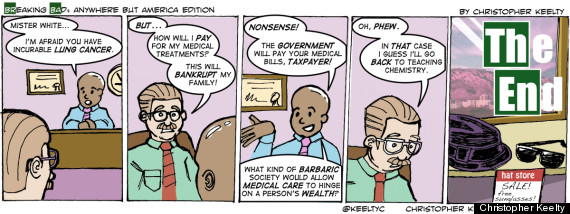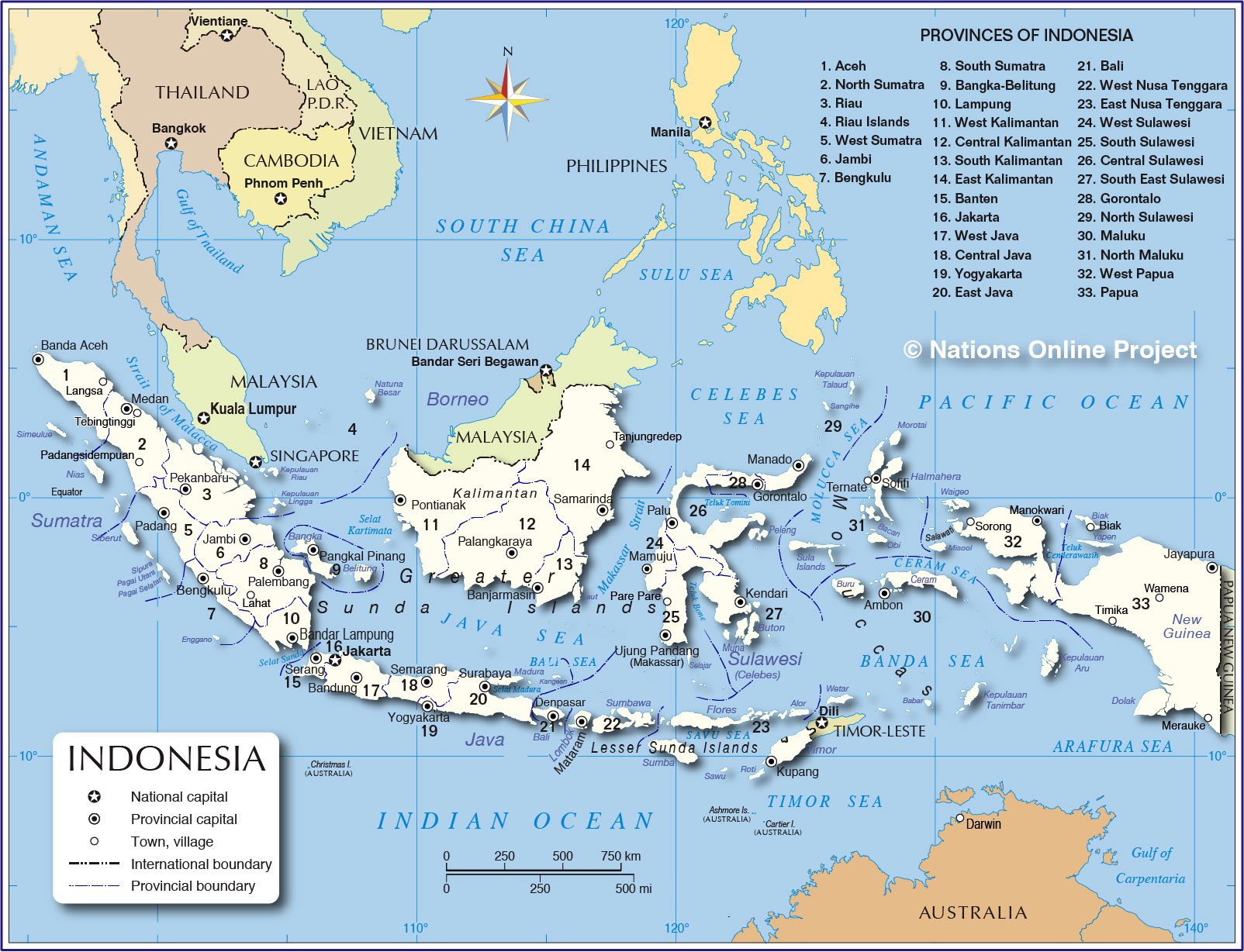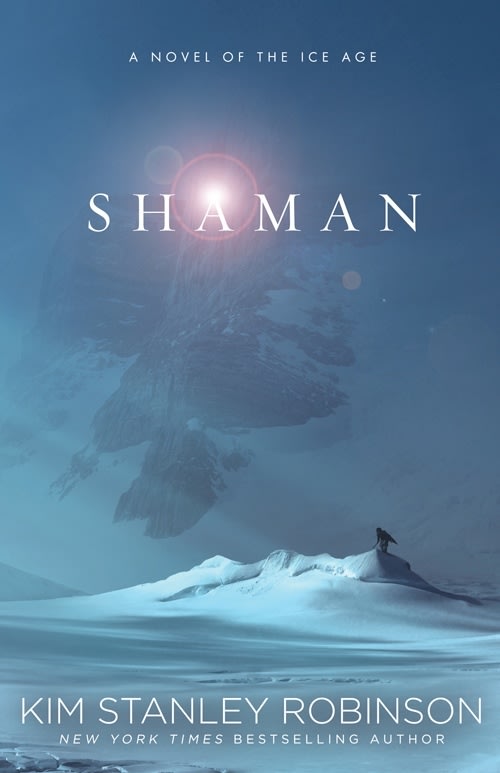First, spoilers will probably follow. I'm not that worried about it. If you haven't watched the Breaking Bad finale, maybe stop here.
Breaking Bad was, simply put, the show of our time. People mention The Wire and The Sopranos along with Breaking Bad in current discussions of "The Best Show Ever," but that's not exactly what I'm talking about. Through a happy convergence of both internal and external factors, Vince Gilligan's AMC drama became a mirror held up to society and to ourselves, and a vehicle for real-world change in the television industry. To wit:
Internal (Thematic) Resonance
Here is a brief look at some of the themes that ran from the pilot episode to the finale of Breaking Bad, and that contributed to both the relatability and the inevitable heartbreak viewers felt for the characters. These themes were never didactically paraded before the audience, but they formed the first assumptions of the show. Without these elements, the show fundamentally could not exist.
The Death of the Middle Class. The Whites were a stereotypical, middle class family with what are becoming stereotypical middle class problems. They were immediately relatable. We got to see in flashbacks their pride at buying their first house together as a young couple starting a family, and we saw the sad end of that dream in a gutted house behind a chain-link fence. Just like so many millions of Americans did as they watched their houses lapse into foreclosure. Many of those families took out their rage at the system on the houses themselves. I saw that firsthand, and it was heartbreaking. In the real world, nine months after Breaking Bad premiered on AMC, Lehman Brothers declared bankruptcy. As we know, that event triggered a wave of mutilation that washed across all of America, where only the unbelievably wealthy were allowed to continue as they were. For the rest of the country, the idea of a comfortable middle class existence – so long the picture of "The American Dream" – suddenly seemed like a taunt or a fairy tale. The same thing happened to Walter and his family when he got his lung cancer diagnosis.
The Abhorrent U.S. Healthcare System. Maybe you've heard that one party currently wants to undermine all Congressional credibility in an effort to send U.S. healthcare back to an intolerable status quo. The Huffington Post ran this great comic panel the other day:
Forget everything else. Everything that came after. Possibly the most horrifying consequence of Walter White's meth empire was the midair collision of two airliners in Season 2. Those that died didn't get their turn on the show to become three-dimensional characters, but that was wholesale destruction of lives and families that never would've happened if Walt had been able to stay in his teaching job after his diagnosis. Which brings us to...
The Crumbling U.S. Educational System. We see two products of Walt's classroom in each episode: Walt and Jesse. Despite his years of service, Walt's cancer diagnosis is a death sentence – either for him, if he forgoes treatment, or for his family if he tries to pay for it – which speaks to the way teachers are treated today in terms of financial and social rewards. And Jesse was one of those kids that slipped through the cracks. Jesse may say "bitch" a lot, but he's a smart guy, man. Emotionally troubled, for sure, but only Walt and Jesse can make the blue. Lots of other folks try, but they're the only ones that can do it. Jesse had one of the most severe curses of our time: unrecognized potential.
The Failed War on Drugs. I wrote at length a few months ago about the transition from "The American Dream" being something based on hard work to something based on magical transformation. Walter White's personal transformation isn't particularly magical, but in his desperation at watching the hard work version of success evaporate, he turned to the other one, looking for a scenario where somebody could make $600,000 in about six months. And that opportunity was literally waiting for him on the street corner, under the watchful eye of his DEA agent brother-in-law.
But Don't Worry. None of this Applies if You're Rich. Elliott and Gretchen Schwartz have basically all the money in the world. They can easily pay for Walt's cancer treatment, and offer to do so. Walt's pride prevents him from accepting their offer – as Walt's pride prevents him from taking every road that doesn't lead to damnation. Walter and his family's struggles are a remote abstraction for the Schwartzes. They feel bad for him, sure, but they can never know the lived-in quality of Walt's desperation...or his resentment toward them. But in the end, Walt hands his money over to these two in order to get it into the hands of his family. They help Walt win, to get what he's always said he wanted, because as Walt says, no one would think twice about them handing over $10 million dollars to anyone they want. They are above the system.
External (Industry) Resonance
Any debate about Breaking Bad's place in the television pantheon is necessarily subjective. But it lies at the crossroads of many objective, substantial changes to what's going on in television now.
The Golden Age of Television. That's what folks are calling it these days. But I haven't seen The Wire, and I only saw the first season of The Sopranos because that's all my college roommate had on DVD. Didn't see Weeds or Nip/Tuck or Dexter, either. That's because those shows all aired on premium, subscription-based channels I can't afford. AMC broke that mold with Mad Men, and that show's success paved the way for Breaking Bad ever getting it's shot. But the knock on Mad Men was always that it was a critical and awards-season darling that never brought in the numbers. Each season's finale scored fewer viewers then its premiere, topping out at about 3.4 million viewers. Breaking Bad brought the numbers, though. It brought the darkness, too, which not only made similarly dark AMC shows possible, but also darkened up other networks' fare, like USA, who used to live by the adage of a "fruit bowl" in every shot. Anybody watch the final season of Burn Notice? That was some bleak shit, right there. Before the ratings and cultural success of Walter White's downward spiral, I wouldn't have thought such an ending was even possibly for that show, and new USA additions like Graceland were darker and edgier from Day 1. AMC's position on the basic cable tier made larger and more diverse audiences possible. The big-four networks will follow suit, if they aren't already.
The Role of Technology (Netflix, etc.) in Viewership. Different people say different things about how significant the impact of Netflix was in terms of growing Breaking Bad's audience, but from my personal experience, I can attest that I would not have been glued to my TV tonight had it not been for the hours I spent with episodes of the show on Netflix. The fact is, before the Season 5 premiere, the show's biggest audience had been around 3 million viewers. Season 5.2 premiere = 6 million. Series finale? North of
So that's it. Now, let the books be written.
Poor Andrea.





















.jpg)




